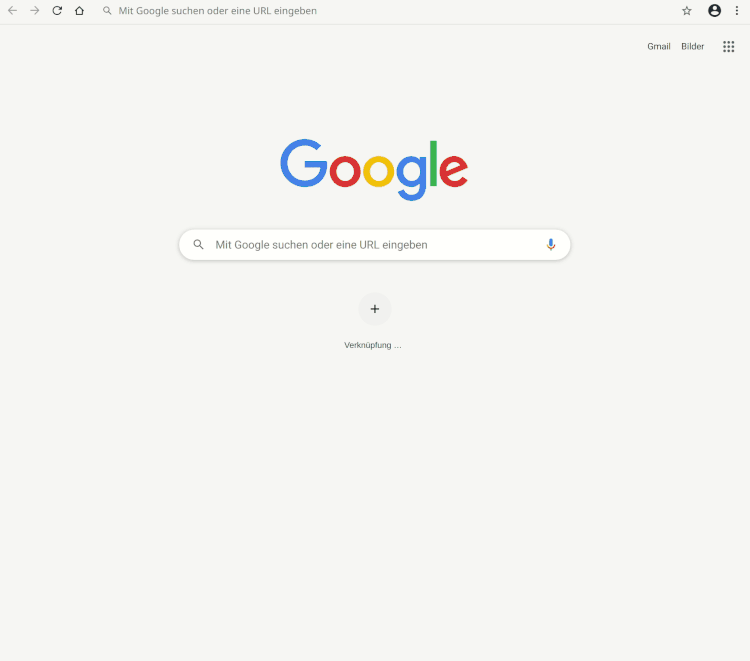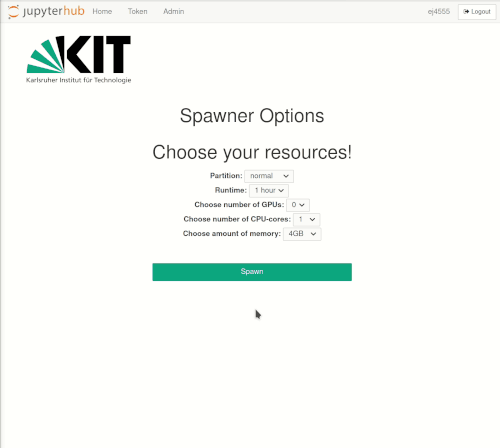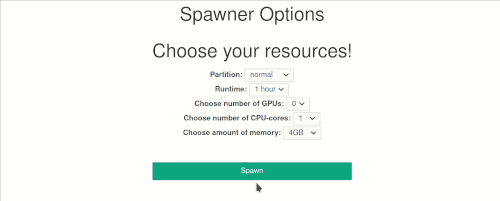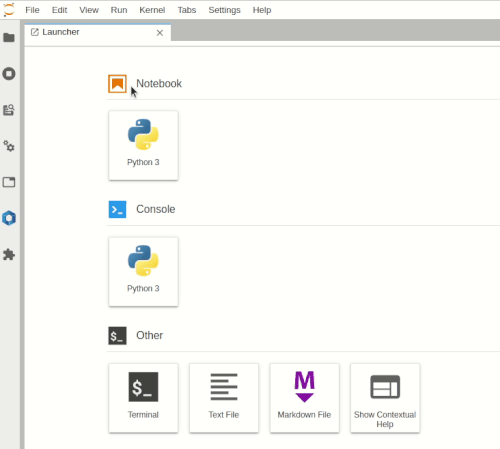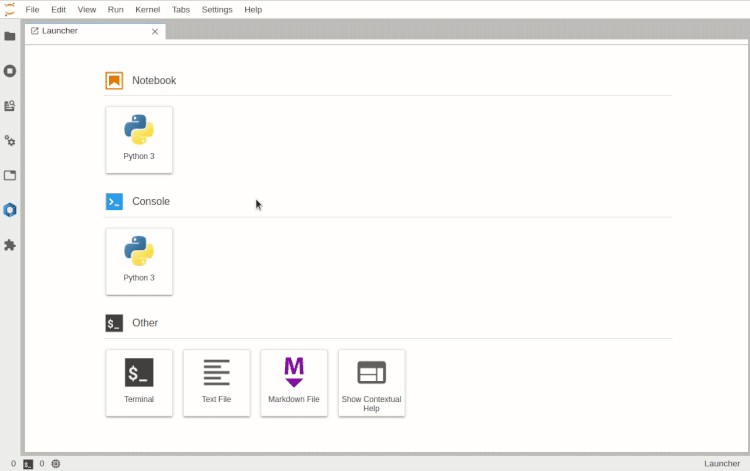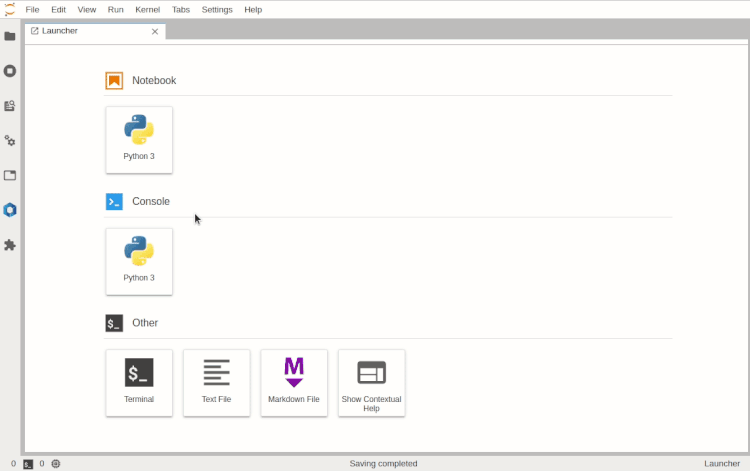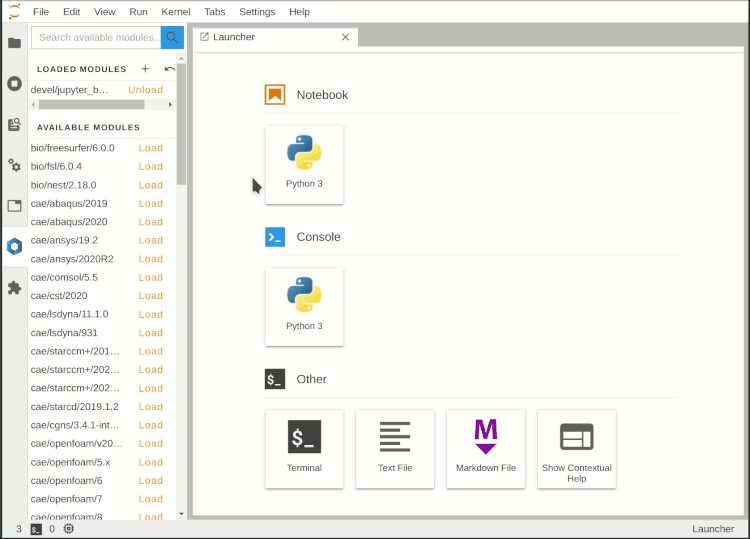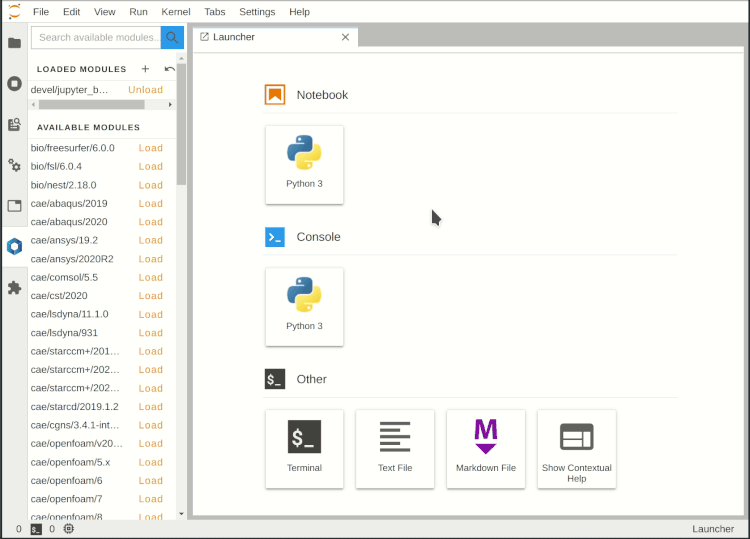BwUniCluster2.0/Jupyter
Jupyter can be used as an alternative to accessing HPC resources via SSH. For this purpose only a web browser is required. Within the website source code of different programming languages can be edited and executed. Furthermore different user interfaces and terminals are available.
Short description of Jupyter
Jupyter is a web application, central component of Jupyter is the Jupyter Notebook. It is a document, which can contain formatted text, executable code sections and (interactive) visualizations (image, sound, video, 3D views).
The Jupyter notebooks are executed in an interactive session on the compute nodes of the respective cluster. Access is via any web browser. Data is prepared and visualized on the server and therefore does not have to be transmitted over the network. Only the resulting text, image, sound and video data is transmitted. Starting point of a Jupyter session is the HOME directory of the user on the respective cluster.
JupyterLab is a modern user interface, within which one or more Jupyter notebooks can be opened, edited and executed. The individual notebooks can be arranged as tabs or tiled. JupyterLab is the standard user interface. Besides JupyterLab the classic notebook user interface is available, in which only one Jupyter notebook per browser tab can be opened at a time.
A Jupyter Kernel describes a separate process, in which one Jupyter Notebook is executed at a time. Different kernels are available for different programming languages or language versions.
Before a Jupyter session is started, the access authorization must be checked first. This is done via JupyterHub, where the resources are selected, for example the number of CPU cores, GPUs or the required main memory.
A detailed documentation of the Jupyter project can be found at https://jupyter.readthedocs.io.
Access requirements
To use Jupyter on the HPC resources of SCC, the respective access requirements for bwUniCluster 2.0 and ForHLR apply. Registration at https://bwidm.scc.kit.edu/ is required.
The Jupyter service is only accessible within the KIT network. If the service is to be used from outside, a VPN Connection to the KIT network must be established first.
Login process
Login takes place at uc2-jupyter.scc.kit.edu or fh2-jupyter.scc.kit.edu respectively. For login, KIT username, KIT password and a 2-factor authentication is required.
If you are not yet logged in to KIT, you will first be automatically redirected to the corresponding login page. Select your home organization (e.g. KIT) and press Continue. In the Login section that appears, enter your KIT username and password (not the service password). After pressing the Login button you will be redirected to the second factor query page. Enter the one-time password (e.g. from KIT Token or Google Authenticator App) and press Validate. Now you will be redirected to the JupyterHub page, after pressing the "Sign in with your KIT Account" button you are logged in.
Selection of the compute resources
The Jupyter notebooks are executed in an interactive session on the compute nodes of the HPC clusters. Just like accessing an interactive session with SSH, resource allocation is done by the Workload Manager Slurm. The selection of resources for Jupyter is realized via drop-down menus. Only jobs with a maximum of one node are possible.
Available for selection are
- Partition/Queue
- Runtime
- Number of GPUs
- Number of CPU cores
- Amount of main memory
After the selection is made, the interactive job is started with the spawn button. As when requesting interactive compute resources with the `salloc` command, waiting times may occur. These are usually the longer the larger the requested resources are.
If by mistake an impossible resource combination is selected, an error message is displayed.
JupyterLab
JupyterLab is the standard user interface. In the following only its essential functions are briefly introduced. A detailed documentation is available at https://jupyterlab.readthedocs.io.
Menu bar
The menu bar at the upper edge of JupyterLab has higher-level menus that display the actions available in JupyterLab along with their shortcut keys. The default menus are:
- File: Actions related to files and directories
- Edit: Actions related to editing documents and other activities
- View: actions that change the appearance of JupyterLab
- Run: Actions to execute code in various activities like notebooks and code consoles
- Kernel: Actions to manage kernels that are separate processes for executing code
- Tabs: a list of open documents and activities in the Dock Panel
- Settings: general settings and an editor for advanced settings
- Help: a list of help links to JupyterLab and the kernel
Left sidebar
In the left sidebar there are foldable tabs. The most relevant ones are:
- File browser: Switch to directories and open files with left mouse button, context menu with right mouse button
- Running kernels: Overview of running kernels
- Command overview
- Tab Overview
- Lmod software selection: Search and load/unload Lmod software modules
Main working area
The main working area in JupyterLab allows to arrange, resize and divide documents (notebooks, text files, etc.) and other activities (terminals, code consoles, etc.) in tabs. By holding down the left mouse button, the tabs can be grabbed and repositioned.
In a new JupyterLab session the Launcher tab is opened first. It contains buttons for starting new notebooks, code consoles and other functions. When a notebook is open, a new Launcher tab can be started by pressing the plus symbol in the file browser tab of the left sidebar, by calling File > New Launcher in the upper menu bar or by the key combination Ctrl+Shift+L.
Classic Notebook
The classic Jupyter Notebook user interface offers only one open Jupyter Notebook or terminal per browser tab. From the JupyterLab user interface the classic display can be reached in the menu bar under Help > Launch Classic Notebook. Clicking on the JupyterHub logo in the upper left corner will take you back to the JupyterLab interface.
Abmelden
Von einer laufenden Jupyter Sitzung können Sie sich durch Aufruf von File > Log Out in der oberen Menüleiste abmelden.
|
Solange die interaktive Sitzung läuft, können Sie diese jederzeit wieder betreten. Je nach Dauer der Abwesenheit ist die erneute Eingabe von Einmalpasswort und eventuell KIT Passwort nötig.
Wollen Sie die interaktive Sitzung vor Erreichen ihrer Laufzeit beenden, können Sie dies über das Hub Control Panel tun. Unter File > Hub Control Panel in der oberen Menüleiste wird dieses in einem neuen Browser-Tab geöffnet. Durch Drücken des Stop My Server Knopfes wird die Sitzung beendet. Sie können sich nun über den Logout Knopf oben rechts abmelden oder über den Start My Server Knopf direkt eine neue Sitzung starten, beispielsweise mit veränderter Ressourcen-Auswahl.
Auswahl von Software
Für die Auswahl der benötigten Lmod Softwaremodule steht in der linken Seitenleiste der entsprechender Tab Softwares zur Verfügung. Durch Eingabe im Suchfeld kann die Liste der verfügbaren Module eingegrenzt werden. Das gewünschte Modul wird über den Load Knopf geladen. In der Liste mit den geladenen Modulen können diese mit dem Unload Knopf entfernt werden.
|
Installation eigener Software
`pip install`
